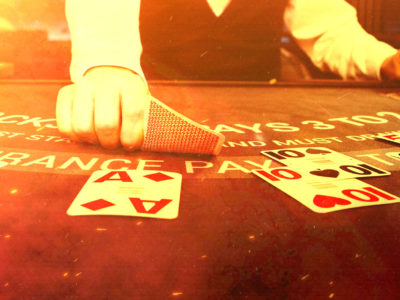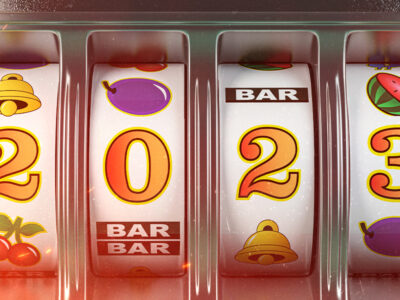Two cheating players each turn over quads in a classic fictional hand of five-card draw in The Sting.
With the Academy Awards this weekend, it seems fitting to revisit a scene from one of the most decorated movies to feature poker — The Sting.
Directed by George Roy Hill and featuring David S. Ward’s fantastic script full of witty dialogue punctuating its twisty plot, The Sting is an all-timer, both critically-acclaimed and a top-notch “popcorn movie” that entertains from start to finish. The film enjoyed the highest box office gross of any released in 1973. It also won seven Oscars including Best Picture, Best Director, and Best Writing, Original Screenplay.
The Sting stars Paul Newman and Robert Redford as a pair of Depression-era grifters scheming to exact revenge on a villainous crime boss played by Robert Shaw. The poker sequence aboard the 20th Century Limited that takes place a little over a third of the way into the film is a sheer delight, concluding with the best cinematic example of the “outcheating the cheater” story common to poker fiction.
The Set-Up
The game is five-card draw. Most poker games were during the 1930s, although stud — the game featured in The Cincinnati Kid (also set during the Depression) — was prominent as well.
What happens in the poker game is actually an early stage of an elaborate scheme being constructed by Henry Gondorff (Newman) and Johnny Hooker (Redford) to take down the crime boss, Doyle Lonnegan (Shaw).
Looking back on the game’s final hand, it’s clear enough to see how it provides a kind of smaller-scale version of the film’s larger plot, foreshadowing the surprising conclusion. (Here come the spoilers.) Just as Lonnegan gets fooled into thinking a fake off-track betting parlor is the real thing in the film’s climax, here, too, is he tricked into believing the person sitting across the table from him is what he appears to be.
On the train, Gondorff gets himself invited to Lonnegan’s poker game. It’s a high-stakes affair Lonnegan regularly hosts. As is explained earlier, in order to play in the game, “all you gotta do is show up and look like a sucker.” That’s exactly what Gondorff does, posing as a drunk, loutish bookie named Shaw who is loaded with cash and ready to gamble.
“Shaw” beats Lonnegan out of an early pot, then rubs it in afterwards — just like an obnoxious drunk might do:
“I’m gonna bust that bastard bookie in one play,” he bellows.
We knew that was going to happen. That’s because before the game, we saw one of Gondorff’s colleagues outlining Lonnegan’s cheating method to him.
“He likes to cold deck low, eights or nines,” went the explanation, meaning Lonnegan arranges a deck in such a way that he will be dealt four of a kind (eights or nines) while his opponent will get a strong but not-as-strong hand.
Gondorff’s colleague also knows what brand of cards Lonnegan typically uses — either Tally-Ho Fan or Tally-Ho Circle, brands first introduced in the 1880s — and so Gondorff has come to the game armed with both decks from which he can draw his own hand when needed.
The Hand
After the three remaining players ante, we see “Shaw” has been dealt 3♥8♥Q♣3♠3♣, while Lonnegan looks down at 2♣4♥7♣9♥9♠. Gondorff leads for $500, Lonnegan raises to $1,000, the third player folds, and Gondorff calls. Gondorff then draws two cards, and Lonnegan three.
After the draw, Gondorff sees he’s picked up the case trey and now has 6♥3♠3♣3♥3♦. Lonnegan meanwhile has drawn the other two nines — as expected — and has 9♠9♥9♦9♣T♠.
Gondorff bets $500, and Lonnegan raises to $1,500. Gondorff makes it $3,500 to go, then Lonnegan gets more chips in order to boost it to $13,500. Gondorff takes his time, rechecks his hand, then calls.
Here’s how it looks, picking up the action after the draw:
Gondorff’s ruse works because of the set-up. Mistaking “Shaw” for a careless, unsubtle yahoo, Lonnegan has zero suspicion his opponent might try to cheat in the game as well. Adding to Lonnegan’s frustration, he can’t even call out his opponent, since the only way he can reveal he knows “Shaw” cheated would be to admit he cheated himself.
“What was I supposed to do? Call him for cheating better than me in front of the others?” says Lonnegan afterwards.
The Lesson
The Sting teaches something about how the “metagame” works in poker — that is, how earlier hands or sessions between players can affect how they play one another later.
Gondorff cheating Lonnegan in the poker game is part of a strategy called “the hook” because it works to make Lonnegan mad enough to try to get back at “Shaw” later on in the film. The appropriately-named Hooker then follows up by presenting himself to Lonnegan afterwards with a plan to double-cross “Shaw,” thereby luring Lonnegan into the fake betting parlor plan.
But the foremost lesson for poker players this scene presents is not to underestimate your opponent. Lonnegan does so here and pays for it. And he’ll do it again later when he falls into the larger trap set by Gondorff and Hooker.
“5-Card Fiction” is an ongoing series examining fictional poker hands from film, television, and elsewhere. Have a favorite fictional poker hand you’d like to see discussed? Tweet your suggestions @PokerStarsBlog.
You can play five-card draw — with no limits on the betting (and no cold decks) — at PokerStars.
Back to TopView Other Blogs
















